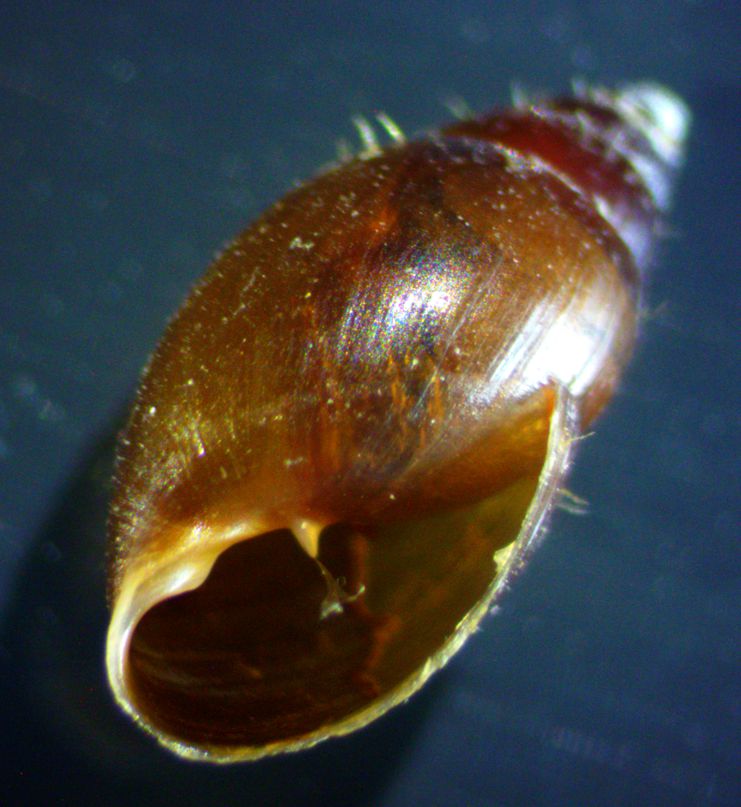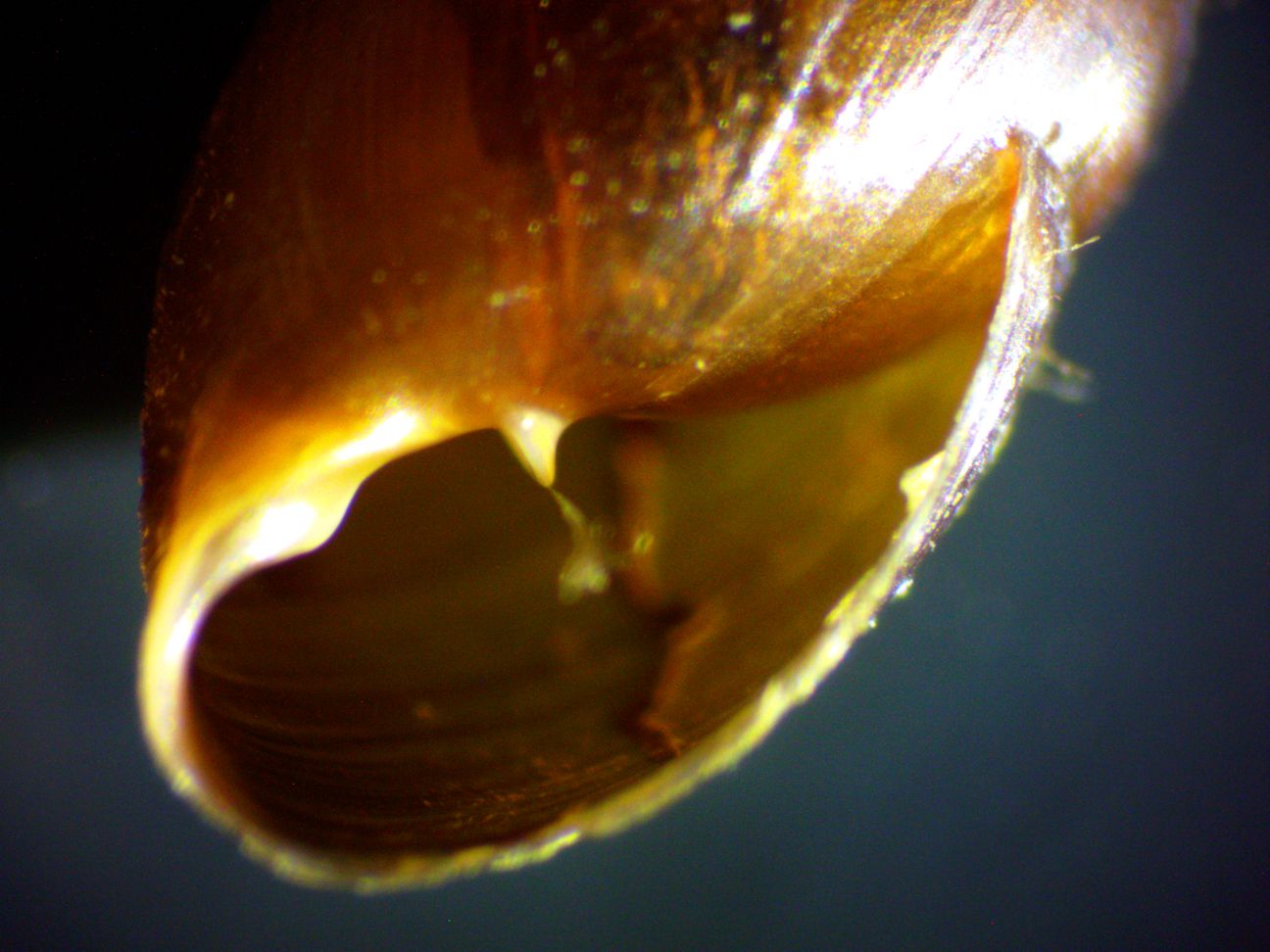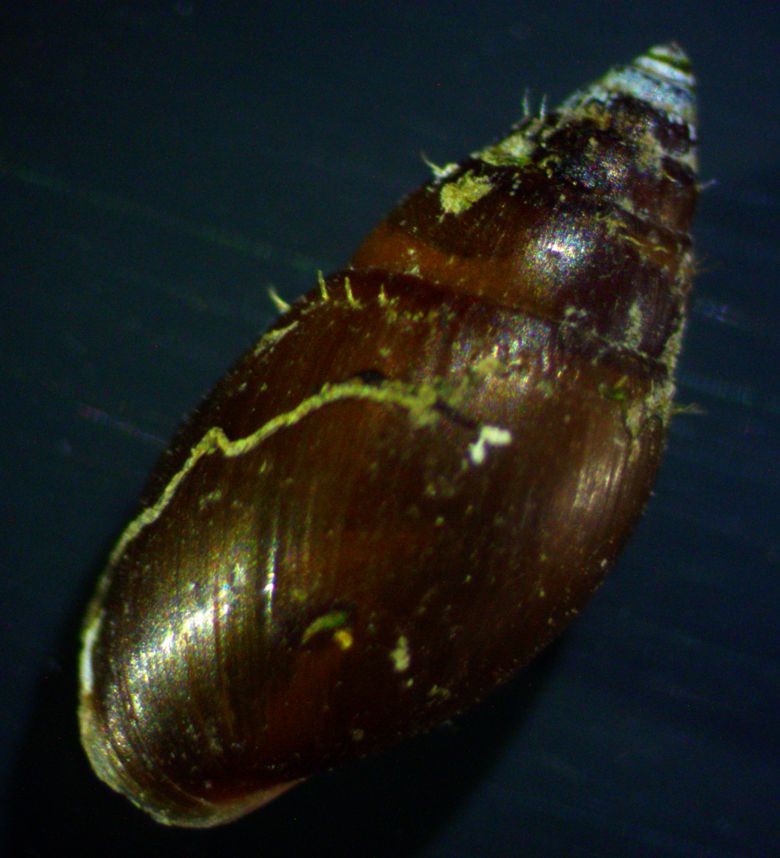Description: As a pulmonate (air-breathing) snail, this species has no operculum. The coiling of the shell is dextral (some pulmonates have sinestral coiling). The shell is ellipsoidal, longer than wide. The spire is conical and often includes about 5 whorls. The periostracum is brown (light brown in the smallest individuals, darker when older). Each whorl has a distinctive spiral row of bristles of the periostracum (see photo above), though the bristles wear off from the older whorls. The aperture is over half the length of the shell. The columella has three folds, only two of which are pronounced (the third is difficult to see). Up to about 7 mm long x 3.5 mm wide. The animal is mottled gray with two tentacles which are darker near the ends. Two eyespots are found just behind and medial to the tentacles, rather than on the tentacles.
How to Distinguish from Similar Species: The general shape of this snail is unique in saltmarsh species. Other saltmarsh species include Littorina subrotundata and Assiminea californica. All three of these species can be found in similar habitat (under Salicornia)
Geographical Range: Eastern Pacific and Western Atlantic. This species is thought to be introduced here from the Atlantic
Depth Range: Very high intertidal
Habitat: Salt marshes, especially under Salicornia (pickleweed) in the very high intertidal zone.
Biology/Natural
History:
This small
snail is thought to have been introduced from the Atlantic.
Symbiotic
protists in this snail include Cochliophilus
depressus and Cochliophilus
minor.
| Return to: | |||
| Main Page | Alphabetic Index | Systematic Index | Glossary |
References:
Dichotomous Keys:Burke, 2013
Carlton, 2007
General References:
Scientific Articles:
Web sites:
General Notes and Observations: Locations, abundances, unusual behaviors:

A view of the snail from the aperture
side. The animal is withdrawn into the shell. Note
no operculum
is present.

In this closeup of the aperture the two obvious folds on the columella
can be seen. A wisp of periostracum
is attached to one of the folds. I observed this same wisp on
several
different individuals that I looked at.
Authors and Editors
of
Page:
Dave Cowles (2014): Created original page
CSS coding for page developed by Jonathan Cowles (2007)
Salish Sea Invertebrates web site provided courtesy of Walla
Walla University
